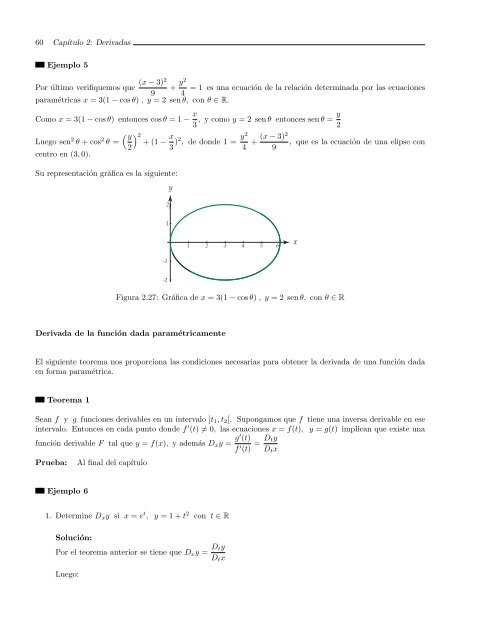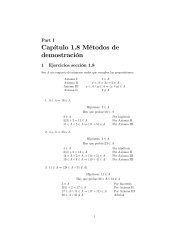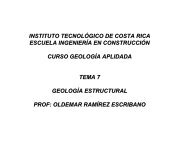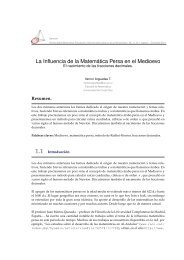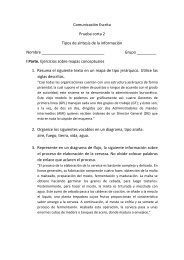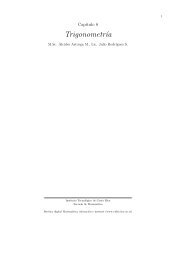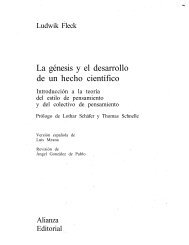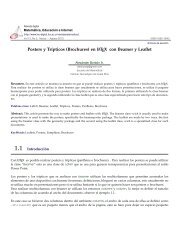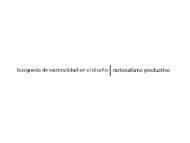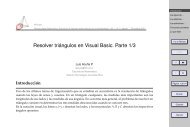Derivada de una función - TEC-Digital
Derivada de una función - TEC-Digital
Derivada de una función - TEC-Digital
Create successful ePaper yourself
Turn your PDF publications into a flip-book with our unique Google optimized e-Paper software.
60 Capítulo 2: <strong>Derivada</strong>s<br />
Ejemplo 5<br />
(x − 3)2<br />
Por último verifiquemos que +<br />
9<br />
y2<br />
= 1 es <strong>una</strong> ecuación <strong>de</strong> la relación <strong>de</strong>terminada por las ecuaciones<br />
4<br />
paramétricas x = 3(1 − cos θ) , y = 2 sen θ, con θ ∈ R.<br />
Como x = 3(1 − cos θ) entonces cos θ = 1 − x<br />
y<br />
, y como y = 2 sen θ entonces sen θ =<br />
3 2<br />
Luego sen2 θ + cos2 <br />
y<br />
2 θ = + (1 −<br />
2<br />
x<br />
3 )2 , <strong>de</strong> don<strong>de</strong> 1 = y2 (x − 3)2<br />
+ , que es la ecuación <strong>de</strong> <strong>una</strong> elipse con<br />
4 9<br />
centro en (3, 0).<br />
Su representación gráfica es la siguiente:<br />
Figura 2.27: Gráfica <strong>de</strong> x = 3(1 − cos θ) , y = 2 sen θ, con θ ∈ R<br />
<strong>Derivada</strong> <strong>de</strong> la <strong>función</strong> dada paramétricamente<br />
El siguiente teorema nos proporciona las condiciones necesarias para obtener la <strong>de</strong>rivada <strong>de</strong> <strong>una</strong> <strong>función</strong> dada<br />
en forma paramétrica.<br />
Teorema 1<br />
Sean f y g funciones <strong>de</strong>rivables en un intervalo ]t1, t2[. Supongamos que f tiene <strong>una</strong> inversa <strong>de</strong>rivable en ese<br />
intervalo. Entonces en cada punto don<strong>de</strong> f ′ (t) = 0, las ecuaciones x = f(t), y = g(t) implican que existe <strong>una</strong><br />
<strong>función</strong> <strong>de</strong>rivable F tal que y = f(x), y a<strong>de</strong>más Dxy = g′ (t)<br />
f ′ Dty<br />
=<br />
(t) Dtx<br />
Prueba: Al final <strong>de</strong>l capítulo<br />
Ejemplo 6<br />
1. Determine Dxy si x = e t , y = 1 + t 2 con t ∈ R<br />
Solución:<br />
Por el teorema anterior se tiene que Dxy = Dty<br />
Dtx<br />
Luego:


